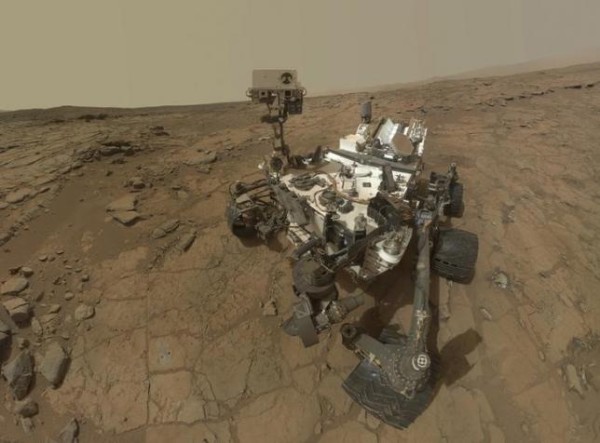NASA's Mars rover Curiosity has find a new route via interesting rocks after proving that the original trail was too difficult to cross over because of the slippery slopes.
On Thursday, the rover went up hill to find out an alternative way that examines the geological boundary. Economic Times, reported that rover went 22 meters up slope, making it closer to a target area of “geological contact.”
Researchers behind Curiosity want to investigate "geological contact" where two different types of rock units meet. The "geological contact" is composed of pale rock unit and a darker, bedded rock unit.
Earlier in May, the rover tried to have a contact, however, NASA officials said that Curiosity's six wheels slipped too much and it did stop mid-drive for safety purposes during its three out of four drives happened between May 7 and May 13.
"We knew that polygonal sand ripples have caused Curiosity a lot of drive slip in the past, but there appeared to be terrain with rockier, more consolidated characteristics directly adjacent to these ripples,” said Chris Roumeliotis, Curiosity's lead rover driver at NASA's Jet Propulsion Laboratory in Pasadena, California.
The NASA scientists let the rover drove around the sand ripples, which they believed to be a firmer terrain, giving it a better traction. However, Roumeliotis and his team were surprised to find out that terrain was a unconsolidated material as well.
The images of the slippage rover allowed the on-board software of Curiosity to compare and analyze the wheel-rotation tally from the actual calculated drive distance.
According to Space, images from Curiosity and NASA's Mars Reconnaissance Orbiter were used to figure out new route and allow the Curiosity to study a similar contact to the west.
Generally, Curiosity is going southward coming from near the base “Jocko Butte” and heading towards a geological contact located in the eastern part of the “Logan Pass” area.
Now, the rover heads up to Mount Sharp's foothills to find out clues from the rock about the changes of Mars' climate and surface conditions over time.


